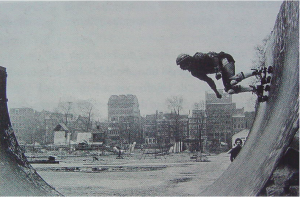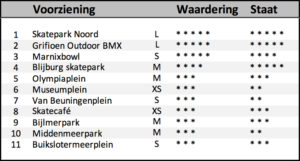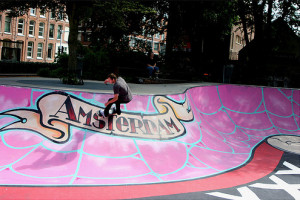Skateboarding originated in California in the late 1950s but it wasn’t until the early 1970s that the first skateboarders started shredding in the Netherlands. During the redevelopment of the Waterloo square beginning of 1977 all of a sudden Hollands’ first halfpipe appeared in between the ruins from all construction- and demolition work in that area. Skating in this halfpipe marks the starting point of the Dutch skate culture.
This skating structure was condoned mainly because of it’s popularity: rollerskaters and skateboarders from all over the Netherlands travelled to the Waterlooplein to skate! Because of the increasing popularity of skateboarding & rollerskating several other ‘Do-It-Yourself’ projects started appearing including the skateramps on the Bickerseiland and in Buitenveldert.
Skateboards & rollerskates became more & more popular and roller sports quickly became an integral part of youth culture from as early as the 1970’s. Nowadays the skating culture has grown bigger than ever and every city district of Amsterdam has some spaces designated to give these skaters & BMX riders a place to ride. Unfortunately, most of these places are of substandard quality and therefore get little or no use. Below is a listing of Amsterdam’s best skatespots, check out our SKATEMAP for a complete listing of all skating & BMX riding infrastructure.
Amsterdam has a total amount of 42 skate facilities with an approval rate of 28%. To improve the circumstances for skateboarding, BMX riding and inline skating in Amsterdam Skatemates has written a skate infrastructure policy which we hope to implement in our lovely city.
The skatepool at the Eerste Marnixplantsoen.




